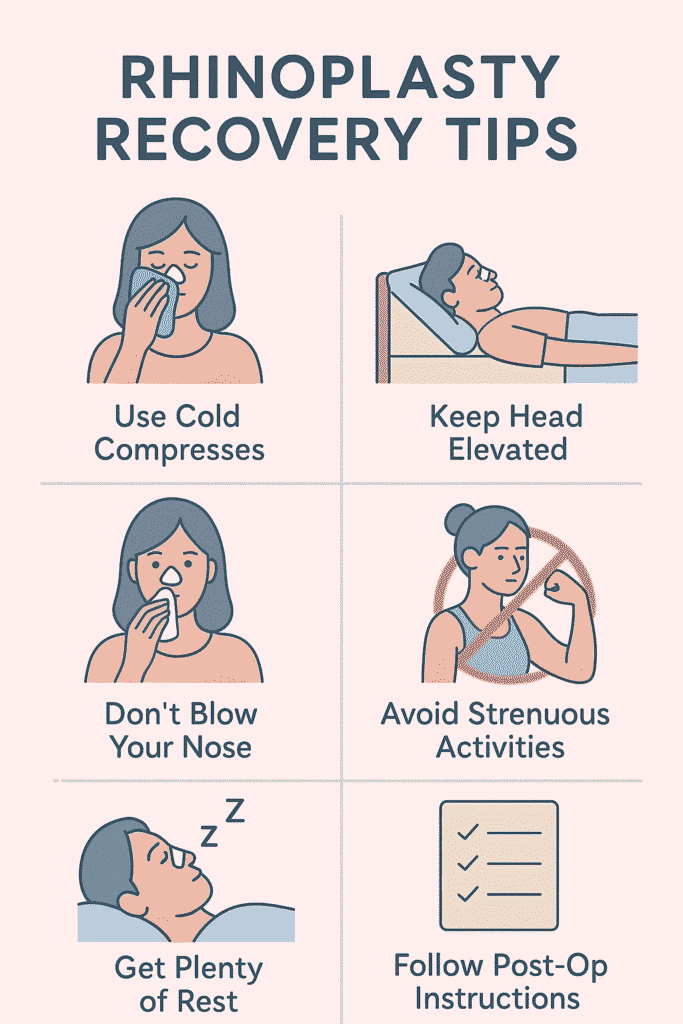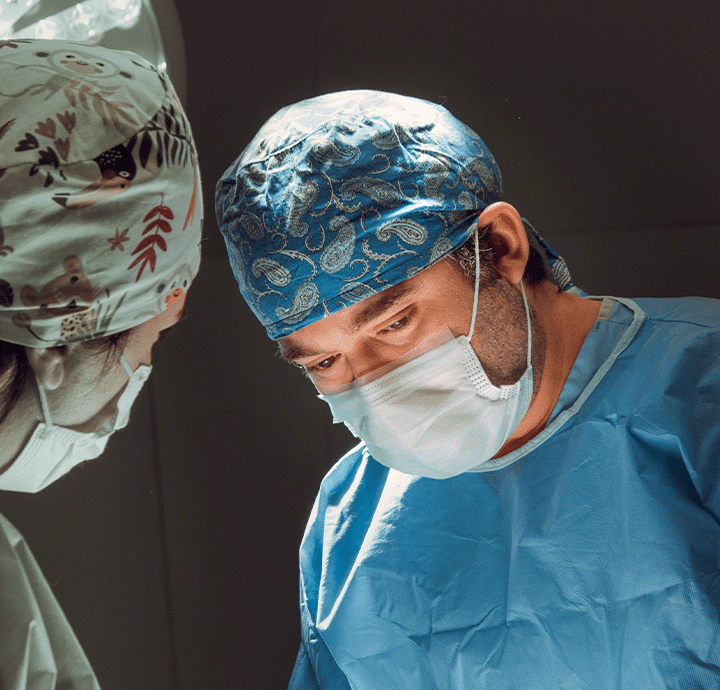
What Is Rhinoplasty & Why Rhinoplasty Recovery Tips Are Important?
Rhinoplasty, also known as nose reshaping surgery, is one of the most commonly performed aesthetic procedures worldwide. It is designed to enhance the harmony of facial features by modifying the shape, size, or angle of the nose. Aside from cosmetic improvements, rhinoplasty can also correct breathing problems caused by structural nasal abnormalities. The procedure can be tailored to meet the specific goals and anatomy of each patient. Results are long-lasting and can significantly improve self-confidence. For more about aesthetic outcomes, visit our guide to natural rhinoplasty.
What Is Ethnic Rhinoplasty?
Ethnic rhinoplasty is a specialized approach to nose surgery that respects and preserves the patient’s unique ethnic features. Patients of African, Asian, Middle Eastern, or Latin descent may require customized techniques to achieve their desired result. Thicker skin, softer cartilage, and distinct bone structures demand a skilled and culturally sensitive approach. Dr. Hanege specializes in creating natural-looking results while maintaining individual identity. For real cases, explore his portfolio of ethnic rhinoplasty transformations.
What Is Revision Rhinoplasty?
Revision rhinoplasty is a secondary procedure performed to correct or improve the results of a previous nose surgery. Patients may seek revision due to breathing issues, cosmetic dissatisfaction, or structural complications. This type of surgery is more complex and requires advanced surgical skills. It involves managing scar tissue, addressing cartilage loss, and reconstructing nasal structure. Dr. Hanege is widely recognized for his success in complex revision rhinoplasty cases.
Overview of the Rhinoplasty Process
Every rhinoplasty journey begins with a detailed consultation, where facial proportions and nasal anatomy are carefully examined. Pre-operative photos, breathing tests, and patient goals guide the surgical plan. The procedure is performed under general anesthesia and typically lasts 1.5 to 3 hours. Patients stay one night in the hospital for monitoring. Post-operative swelling, bruising, and temporary congestion are common. Follow-up visits are essential to monitor healing and remove splints or sutures. Results gradually become more visible over the first 3–12 months. With the right surgeon and a commitment to recovery, rhinoplasty can be life-changing.

10 Essential Tips for Rhinoplasty Recovery
- Ice Compression – In the first week, gently applying cold compresses helps relieve discomfort and reduce swelling.
- Pineapple & Parsley Tea – Both pineapple and parsley contain anti-inflammatory properties that may reduce bruising and swelling.
- Protein-Rich Diet & Water Intake – Maintaining a balanced diet with high protein and adequate hydration supports tissue repair and recovery.
- Avoid Salt and Spicy Food – These can contribute to bloating and increase post-operative swelling.
- Massage & Nose Taping – With your doctor’s guidance, gentle massage and taping can help minimize lumps and swelling.
- Avoid Smoking & Alcohol – These substances impair healing and should be avoided to ensure optimal surgical results.
- Limit Physical and Sexual Activity – To avoid pressure spikes and trauma, abstain from intense activity, including sexual intercourse, for the first month.
- Use of Supplements & Medications – Bromelain, arnica cream, and lozenges for throat discomfort are often helpful if advised by your doctor.
- Restrict Exercise & Gym Activities – Avoid heavy workouts, swimming, or gym sessions for at least three months post-op.
- Avoid Direct Sunlight – Use hats and sunscreen to protect your healing nose from harmful UV exposure for at least two months.
Exclusive Advice for Ethnic Rhinoplasty
In cases where rib cartilage is used for nasal reconstruction, it’s crucial to follow a precise post-operative care plan for the donor site. Make sure you perform dressing changes on the rib area as instructed by your surgeon. Cleanliness and correct application of wound-care creams are key to avoiding complications. After the incision has healed, scar-reducing creams may be applied both to the nasal area and the rib site to help minimize visible marks. Proper care of both surgical zones contributes to a smoother and more confident recovery.
Final Advice
While physical recovery plays a vital role, mental and emotional readiness is equally important. It’s natural to experience emotional ups and downs during the healing process. Some days your nose may look different due to swelling or asymmetry — trust the process. Stay in touch with your surgeon, attend follow-up appointments, and give yourself time. Managing expectations and maintaining a positive mindset are key to long-term satisfaction. Surround yourself with supportive people and remember the reasons you pursued this transformation in the first place.
Frequently Asked Questions
- When can I expect to see the final results of my rhinoplasty? – While swelling improves within weeks, the nose may take up to 12 months to fully settle into its final shape.
- Can I apply makeup after rhinoplasty? – You may begin using makeup around the nose area after the splint is removed, typically within 7–10 days.
- Is it normal to have breathing difficulties after surgery? – Temporary breathing issues are common due to swelling and nasal packing, usually resolving within a few weeks.
- How do I manage scars after ethnic rhinoplasty with rib graft? – Follow your surgeon’s post-op instructions and apply scar-reducing creams to both nasal and rib incision sites.
- Can I wear glasses after rhinoplasty? – You should avoid resting glasses directly on your nose for at least 4–6 months. Special nose guards or taping may be used.
- Is bruising normal after rhinoplasty? – Yes, bruising around the eyes and nose is a common part of healing and typically fades within 10–14 days.
- Can I sleep on my side after rhinoplasty? – It is recommended to sleep on your back with your head elevated for the first few weeks to minimize pressure and swelling.

